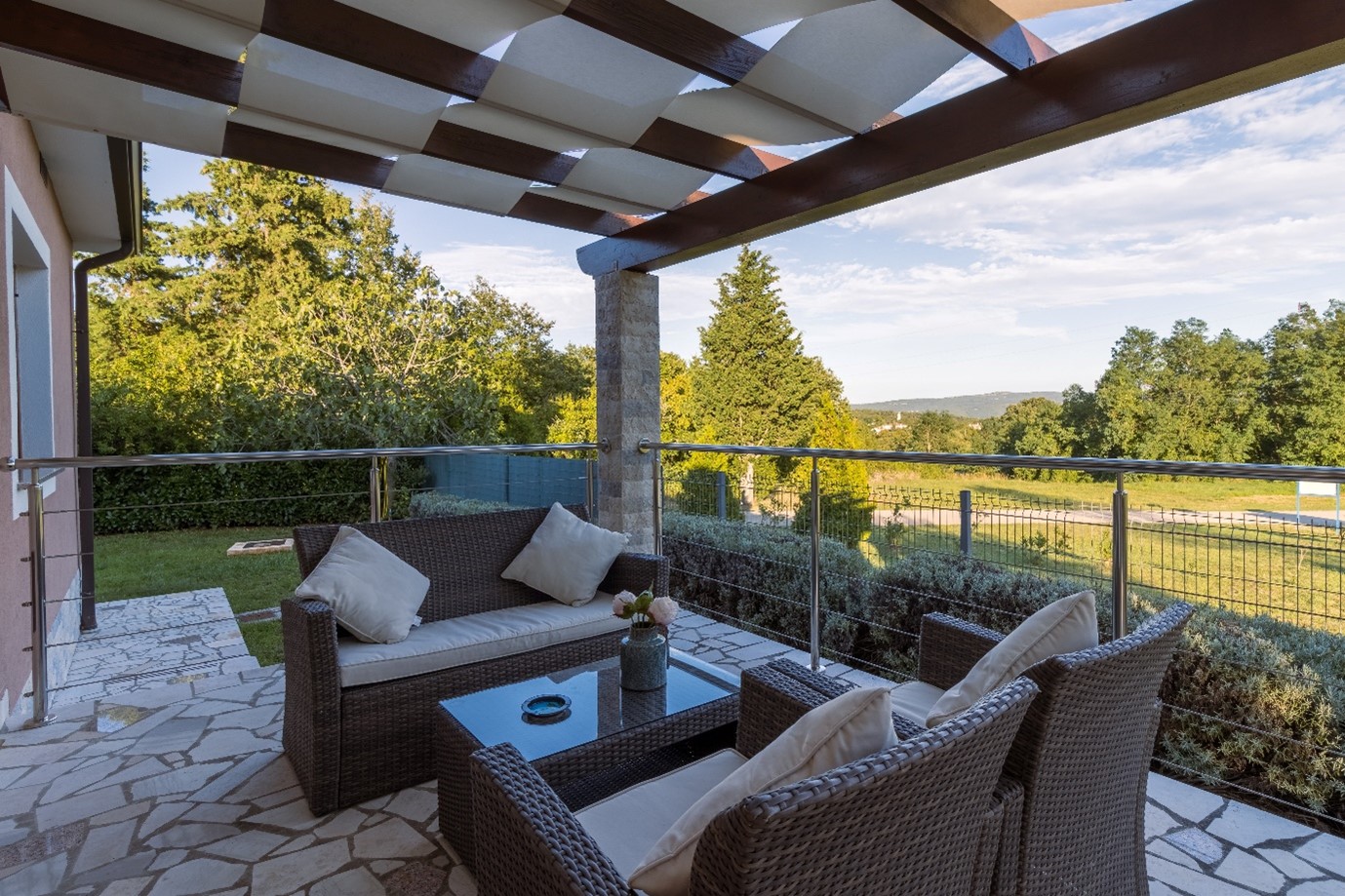So, you’re ready to take the plunge and start your patio project, but where do you start?
We put together a handy guide to take you through the early steps you can take before breaking ground.
Step 1: Choose and calculate your paved area
Before you can do anything, you need to decide where you would like your paved area to be.
If you haven’t decided, read our guide on Where you should lay garden paving to help you choose the best spot for it.
Once you have decided, you need to calculate the number of stones you will need. To do this, you calculate the paved area.
To calculate the area for regular shapes, for example, squares, rectangles, etc., simply measure the width and length of your chosen shape and multiply them together.
For the sake of simplicity, it is best to measure in metric units, for example, metres or millimetres, as paving stone sizes are given in mm across the Stone & Porcelain website. This will save any errors in converting from imperial to metric units.
For more complex shapes, you should split your proposed space into several squares, rectangles, or even triangles to calculate smaller areas and then add them all together at the end. This will give you an overall area for the whole shape.
Area formulas
Squares and rectangles: base x height
Triangles: base x height / 2
Circles: 2)
Step 2: Choose your paving material
The next step is choosing the material you would like to use to cover your paved area.
Some of the most popular stone types used across the UK are slate, granite, sandstone, and porcelain.
Slate
Popular thanks to its riven and therefore anti-slip finish, slate gleams when wet and yet remains safe underfoot.
Slate’s classic tones of black, blue, grey, and green are popular with homeowners looking for a statement paved area that will stand the test of time.
As a naturally occurring metamorphic rock, slate paving is extremely dense and hardwearing, and impervious to water, helping it to last for many years.
Granite
Granite is instantly recognisable thanks to its unique speckled appearance which highlights many colour tones within each paver.
Available in a range of colours including:
- Greys
- Whites
- Blacks
- Browns
- Pinks
- Oranges
- Yellows
Granite is an igneous, naturally occurring stone that is resistant to heat, water, slips, and scratches, making it incredibly durable and long-lasting.
Sandstone
Another naturally occurring stone type, sandstone has long been used in outdoor paving because of its warm, neutral colour palette and hard-wearing qualities.
No matter which colours you choose, from warm greys and beiges to light browns and reds, there will be natural variation within the stone, creating a beautiful feature of your paved area.
As a sedimentary rock type, sandstone paving is naturally slip-resistant, weather resistant, and durable, making it perfect for gardens and driveways across the UK.
Porcelain
Porcelain paving is manufactured using naturally occurring, hardwearing materials, including quartz, silica, and feldspar. These minerals, combined with the vitrification process (firing at very high temperatures, of around 1,200°C) makes very durable stone paving.
Available in a huge array of consistent colours and patterns that are resistant to solar fading, this stone is perfect for homeowners who want plenty of choices.
Thanks to the vitrification process, although thin, porcelain paving is very durable. They also have a low water absorption rate and are stain resistant, perfect for easily cleaning up spills at family barbecues.
Step 3: Pick your paving shapes
Now you have found the area of your chosen space, in metres or millimetres, and know which stone you prefer, you can choose your paving shape.
Each shape will influence the look of your space and because of the difference in size will require a different number of stones.
Paving slabs
Larger stones are generally the most popular option with customers who want to create patios and pathways that have a uniform appearance.
As larger stones, around 600 x 600 mm, they cover greater areas more efficiently.
Narrower blocks
Similar in width to traditional paving slabs, but much shorter in depth, narrower blocks give a linear effect to gardens, helping to make smaller gardens seem longer and narrower spaces seem wider.
Ranging in size from 600 x 150, 600 x 300, or even 900 x 300, these stones are ideal for coping, and edging larger expanses of stone, or crafting larger paved areas with repeating smaller stones.
Setts and cobbles
Setts and cobbles are the smallest stones used to pave areas and give a lovely effect when used to cover a large space or add detail to the edge of a patio, path, or driveway.
Cobbles are around 100 x 100 square, and setts are generally 100 x 100, rising to 200 x 100.
Contact the experts in garden paving
If you’re on the hunt for high-quality paving that looks great and lasts for years, Stone and Porcelain are here to help.
For expert advice on which paving is best for your project, or for help working out how many packs you need, you can contact our experts. Call us on 01744 304 545 or fill in our contact form and we’ll get back to you as soon as possible.

